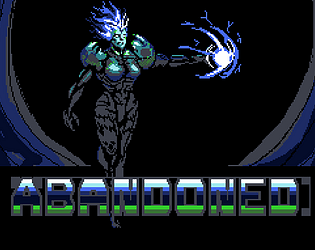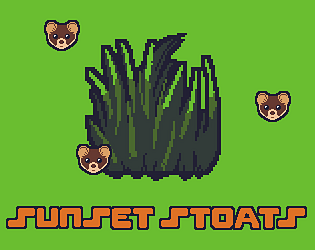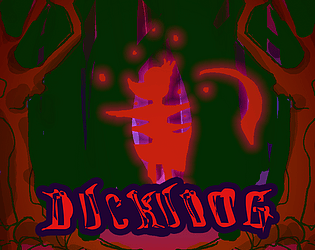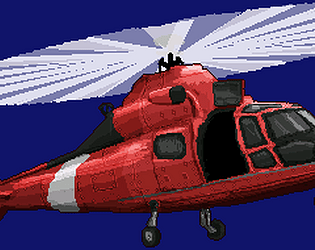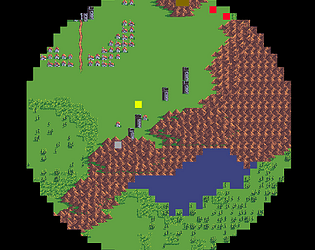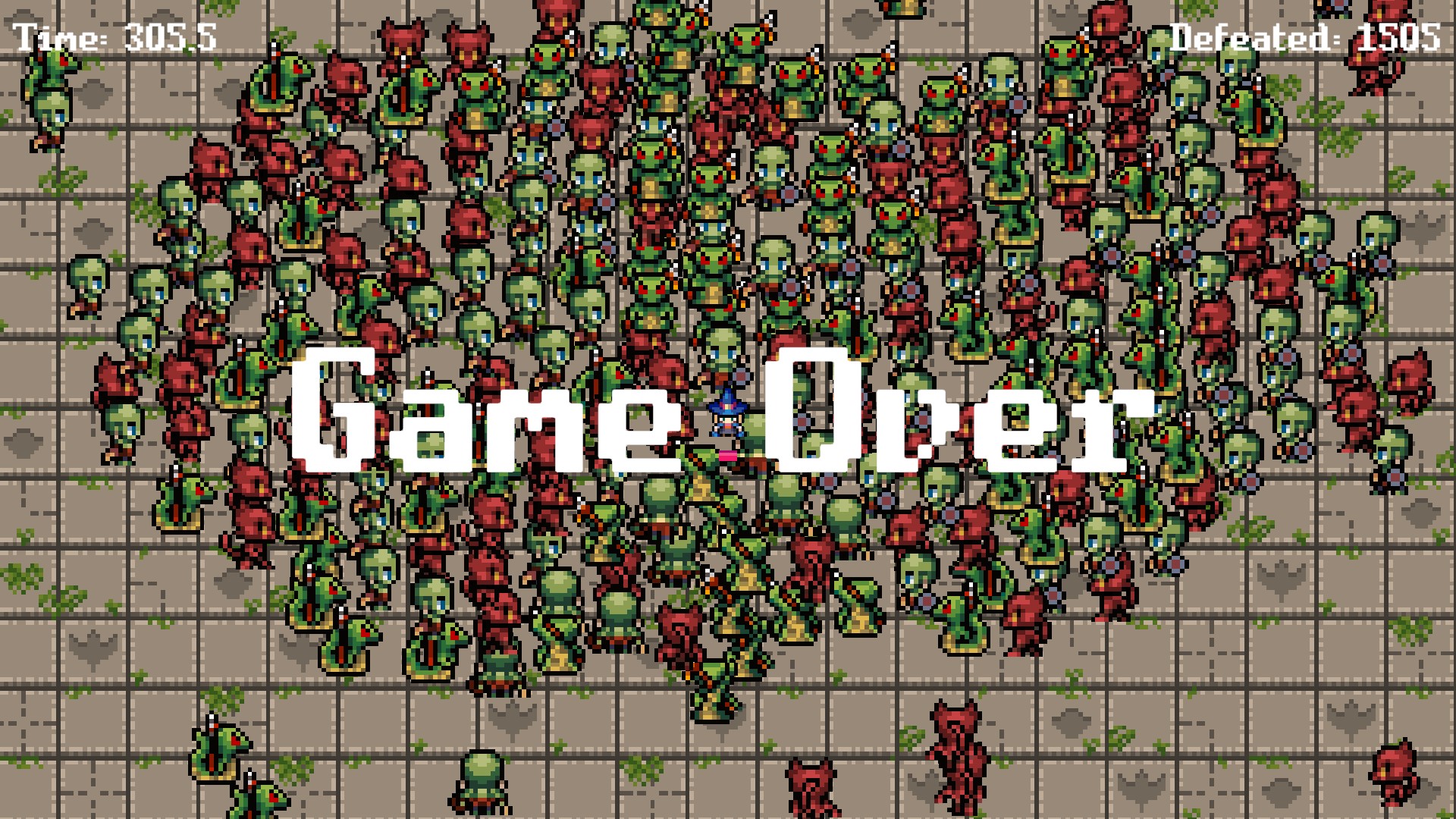Ah I see, good catch. Unity's pixels per unit were funky, I guess that one got missed during the clean up process, ugh. Thanks again for playing!
Burnerknight Studios
Creator of
Recent community posts
Hey all! Unfortunately, I've run out of time to work on my project and there are too many pieces still missing to make it a playable experience. The past two weeks have been so busy and the time I've been able to dedicate to the project has been very little. In any case, I'm happy that I was able to revisit this project on the 10th anniversary of me participating in the Speedgames, and I'm looking forward to completing the experience. Now I've got two projects from this year on the backlog that I need to get completed! Both Classic and Hardmode submissions!
With that said, I've got some stuff set up in the Unity project, some movement, an attack, and an enemy, so I'm excited to keep adding the gameplay pieces necessary so the game is playable. I'll share the link when that happens!
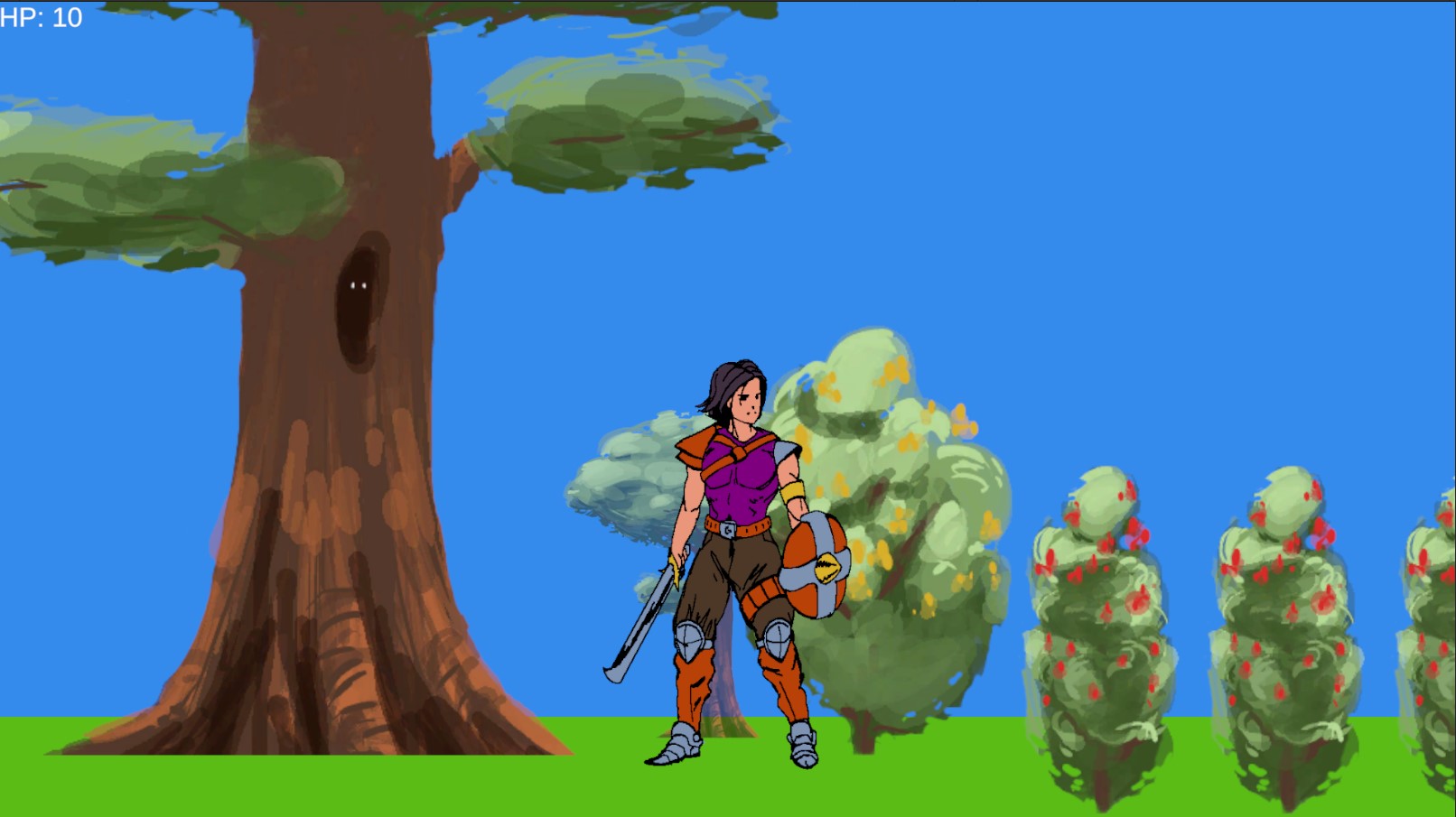
Day 8
I've got several more animations in. As good as it gets for a jam! Now I'm building out the scene in Unity and setting up my objects to get gameplay going. Progress has been slower than I expected as life has been busy. But, we're one week in and one week to go!
Here's how the animations are looking:
- Standing Attack, three frames.
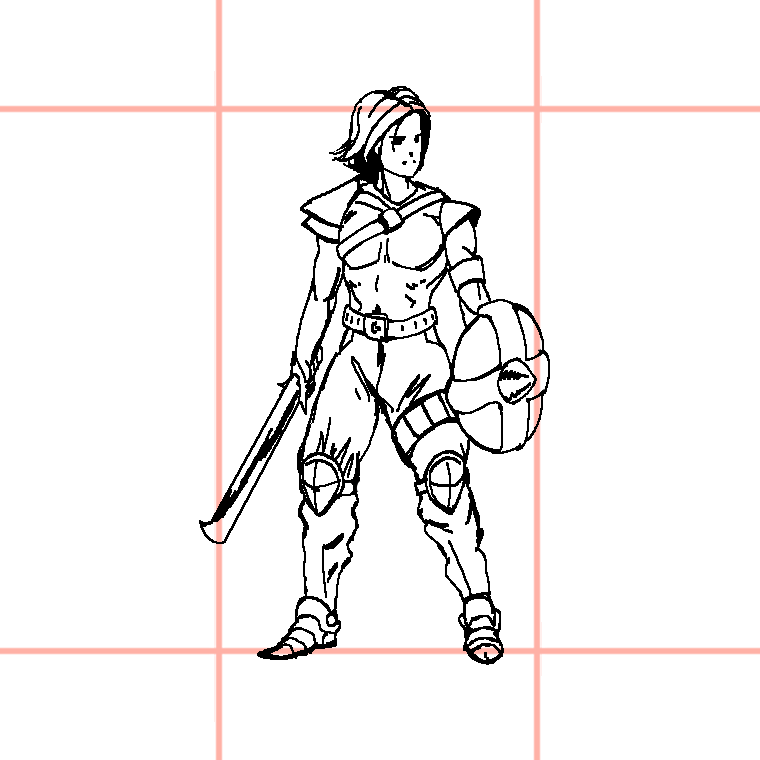
- Crouching Attack, three frames.
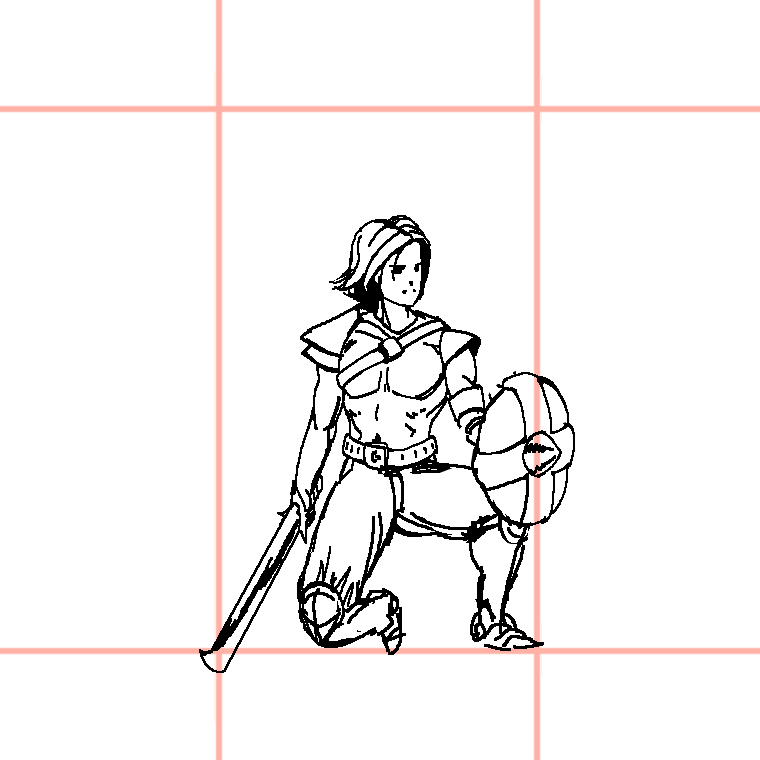
- Running, six frames.
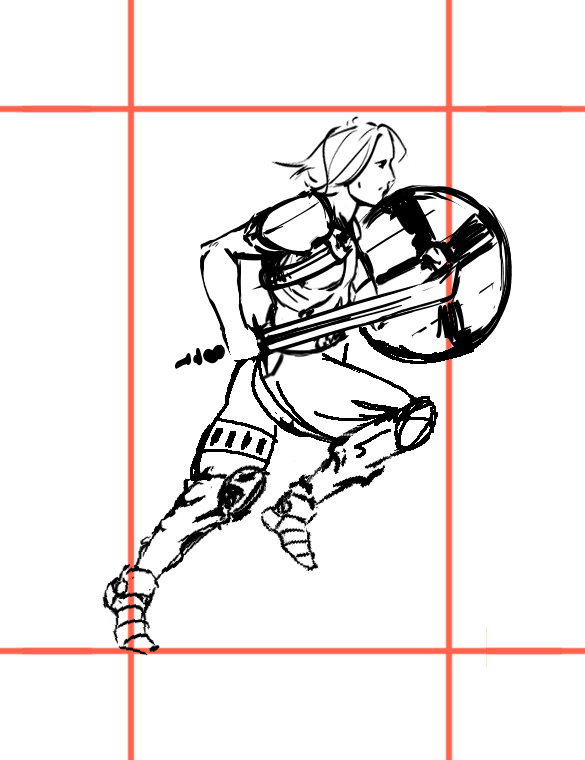
DAY 3
Here's the idle for our hero character. Decided to rework and tighten up the animations, starting with the idle. The original was full of energy, but I felt was too "all over the place", I wanted a tighter and calmer idle. I lost a bit the energy of the linework as well due to how I'm doing the strokes and the kind of brush I'm using. I may go over the idle again with a brush closer to the original. Here's the new idle and below the old one for reference.
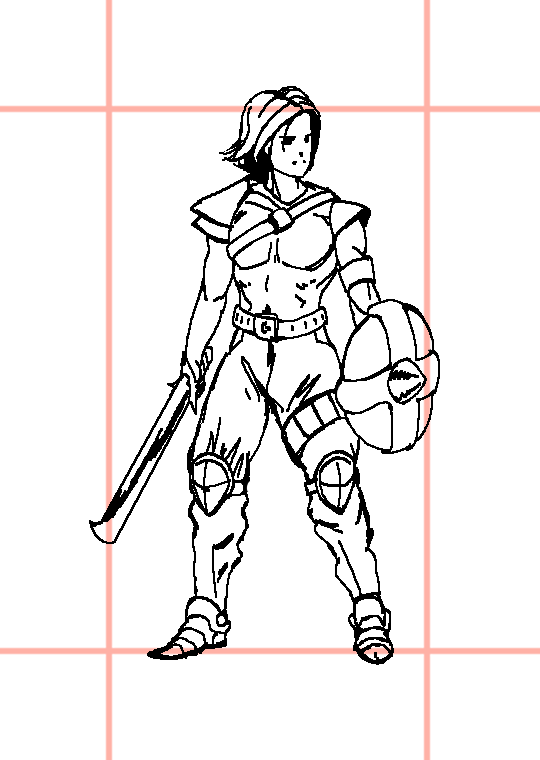

Work on the art continues. This week the major goal is to have a prototype up and running with at least one playable stage, the player animations done, and one enemy.
DAY 1
So the winning verses are Psalm 119:105, Matthew 14:20, and Ecclesiastes 3:11. I don't see myself using the verse in Matthew 14 in terms of gameplay, but could perhaps mention it in some lore or story bite. But Psalm 119:105 and Ecclesiastes 3:11 have strong gameplay connections in my eyes, they stand out to me, so I'll be incorporating these two in some way in my game.
Today I'll set up the project, look through my old concept art and ideas and see what ideas I'll revisit and what I'll need to make anew. I'll also plan out how I'm going to go about making this project to completion this time around. I'm a lot further ahead as a dev now then I was 10 years ago, but I have a lot more responsibilities now then I did then too! So it'll be interesting to see how things come together!
Story
A warrior sets out for revenge when their village is destroyed by strange creatures. Blinded by rage, they never realized how insufficient their power was. Defeated, broken, but not yet dead, a strange light comes upon the warrior and offers a second chance. As a voice begins to speak, the warrior is filled with an overbearing sense of hope, security, and peace. The chance they're given: through God or through their own power. If through God, they will be granted the ability and equipment necessary to defeat this evil bent on death. If not, well, they will lose on the battlefield not only of the body but that of the heart. The battle is against more than flesh and blood, and the light from The Highest will be a guide and a lamp through the dark and turbulent times ahead.
My very first Speedgame was in 2014, back when it was still hosted by the CCN/CDEVS (Christian Coders Network, Christian Devs) community. At that time, I was embarking on a quest to develop a game with as little tutorialization as possible, pool together my skill and knowledge, and try to make a new game concept compared to what I had done in the past. There was an idea in my head, a 2D side-scroller inspired by games such as Altered Beast, Act Raiser, Wonder Boy in Monster World, and Ys, that I wanted to make. With large character sprites and monsters, and an intriguing three-part stage, along with a map with several areas to visit, I was overscoping with an idea I didn't know that I could execute on, but sure was going to try.
Fast forward two weeks later, and I had drawn some sprites rather than pixeled, both characters and environment, and had a basic prototype up and running. I had run into issues with my jumping mechanic, but I did have an attack combo functional, and two out of three stages mostly complete. I had pushed myself as an artist and developer like never before, and from it was born the prototype of Warrior. I never uploaded the project because it wasn't done to my standards, but I have shown it around before. There's even an old YouTube video showing some of the gameplay:
(Video says 9 years ago, but technically it will be 10 years on July 1st.)
That was 10 years ago. For this year, I'm going to revisit Warrior and remake it in Unity (It was originally made in GameMaker Studio). I'll revisit the sprites and tiles again to touch them up, but will mostly be following the same aesthetic. I will be rebuilding the game from scratch however. I will also need to implement the new verses. The verses for the 2014 Speedgame Challenge were Ephesians 6:12, Romans 10:9, and Hosea 6:6. I implemented then the verse in Ephesians and Romans. I'll be keeping that scriptural base as part of the thematic theme for the game and implement one or more of the winning verses once they have been chosen for this year. Curious to see what wins out!
I'm really looking forward to remaking this!
So due to the outage yesterday, the deadline for the jam got pushed an extra day. I'm busy with work, but I hope to get some more time in later today to get some gameplay in at least for my jam game! Here's how the titlescreen with a rough art mockup is looking, but the scene is set in Unity, now I just need to get everything else in!
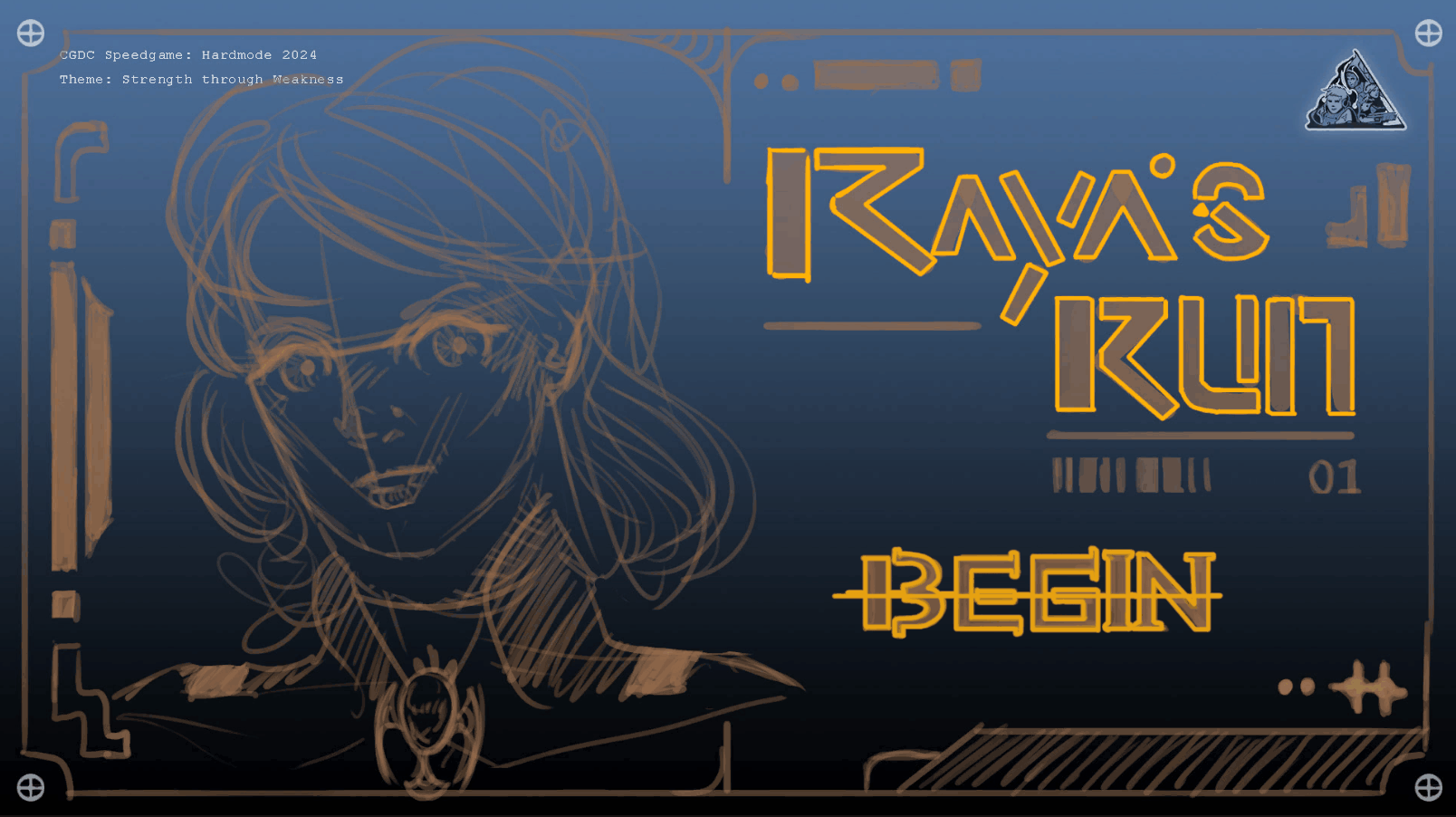
Hey all, a bit late to the party, but here I am!
Friday I started a moodboard since the idea I have of the game is more aesthetic and mood-based rather than specifically mechanical. I've been toying with the idea of lite RPG elements, VN, and even throwing in one of my super small games I've made for the Trijam as a sort of mini-game inside the actual jam game. Regarding genre, I was considering some Horror and RPG, and finding strength in weakness (weakness through fear). Haven't decided yet. So going to spend some time today building out the initial parts of the project and see what I can get together today!
Here's a shot of my moodboard if you're curious of what it looks like!
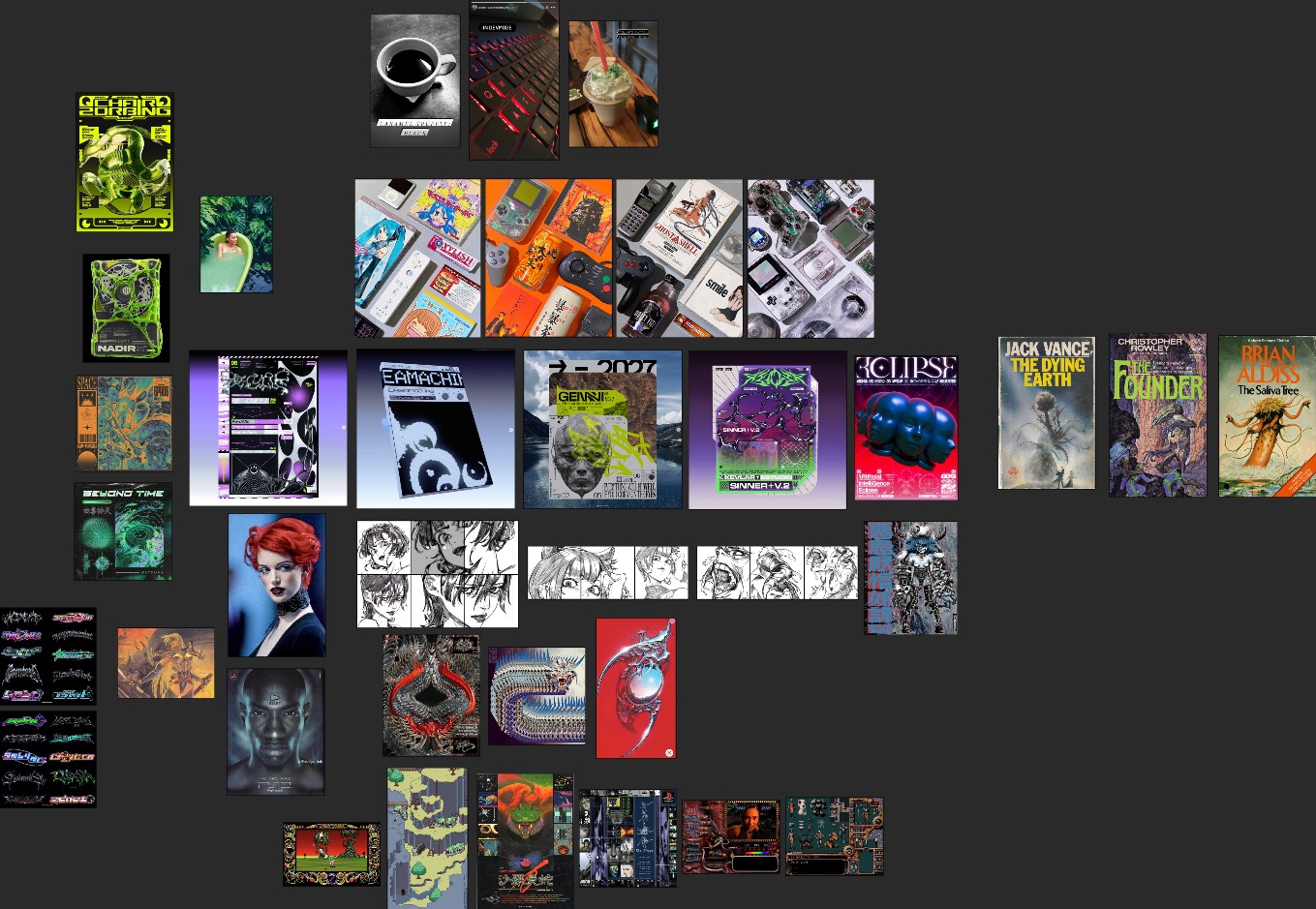
Thanks for playing!
Getting that border boundary right was harder than it should be, so as a follow-up I'll be tweaking it some more. Wish Unity made it easier. In GMS2 it was a cinch. Regarding the sprite size, definitely something I need to keep playing with. I personally dislike tiny sprites since I want the artwork to be appreciated, unless the small art style is still crunchy. Just need to keep experimenting. Was it any better with a fullscreen? I find getting the HTML and fullscreen settings right kinda mess with the scale too.
Ah interesting. I came to a moment in Level 8 where no matter which direction I went, I would hit an Exit doorway but then there was nothing but a drop into nothingness, so I wasn't sure if it was something missing or if I messed up. Since I had to go, I couldn't explore more to see if there was something that just needed triggered to change both exits. I figured I'd go back again.
Pretty impressive concept for the 3 hours, and it made me look up the games it was inspried by. I'm pretty intrigued! Great job on this. There were a few bugs (disappearing wall, movement issues), and some things that looked like anomalies but weren't like the lighting flickering. But other than that, I got to level 8. You say there's a level 9? I'll have to try again!
Also, kudos on making a short game that can keep people hooked for more than just a few minutes! I think I spent like 15 minutes playing and trying again and again! Definitely a gem here worth polishing!
As it stands, I've blown through my 3 hour budget because I got caught up in some stupid stuff related to the input. Hate it when that happens. I still plan on submitting, but man it's going to be something I'll need to watch out for in the future!
I've got the basic minimum of a game in there but need a few more things to tie it all together. Hoping to get that completed by tomorrow before the deadline.
Alright, it's been a super long while since I've been able to participate in this, so looking forward to it again.
What comes to mind with this theme is some sort of action game with potentially roguelite or roguelike elements. Like a super lite version of Vampire Survivors, 20 Minutes Till Dawn, something along those lines. Or maybe just a simple twin-stick arena action game. I'll blow my time if I try to focus on doing a lot of those backend systems, so I may opt for something a lot simpler. Maybe skip out the rglt/rglk elements and focus on the action, or try to get at least one element in. We'll see.
I'll try to reuse some really basic code (if allowed), like movement and input, scene management, etc from another project of mine and then try to split my 3 hours this way:
1 hour: Coding Gameplay
1 hour: Art and Effects
1 hour: Polish
Going to aim to have a complete loop, with an intro title, game scene, and results scene, and then return to either the main title or go and play another round. Don't know if I'll be able to implement anything procedural, not that experienced in those kinds of systems.
I didn't see this mentioned, and I'm not a part of the Discord (is there even one?), but can premade code assets one has previously made (not necessarily third party) be used? Things such as character controllers, audio systems, state machines, controller input, scene management, etc. Or does that all count as part of the "code" which needs to be built from scratch?
Just curious since a good practice when it comes to building games is learning to build reusable code bases to speed up development.
Yup! That's always been one of my downfalls when doing game jams, in addition to overscoping. As an artist, it's really hard not to want to do all the graphics super properly. I forced myself to use graphics from OpenGameArt.org just to focus on the mechanics, but even then I wanted to polish stuff up and do some things code-wise that would have eaten into my time. I was happy with just doing one piece of art though lol, a fuel depot for my game.


